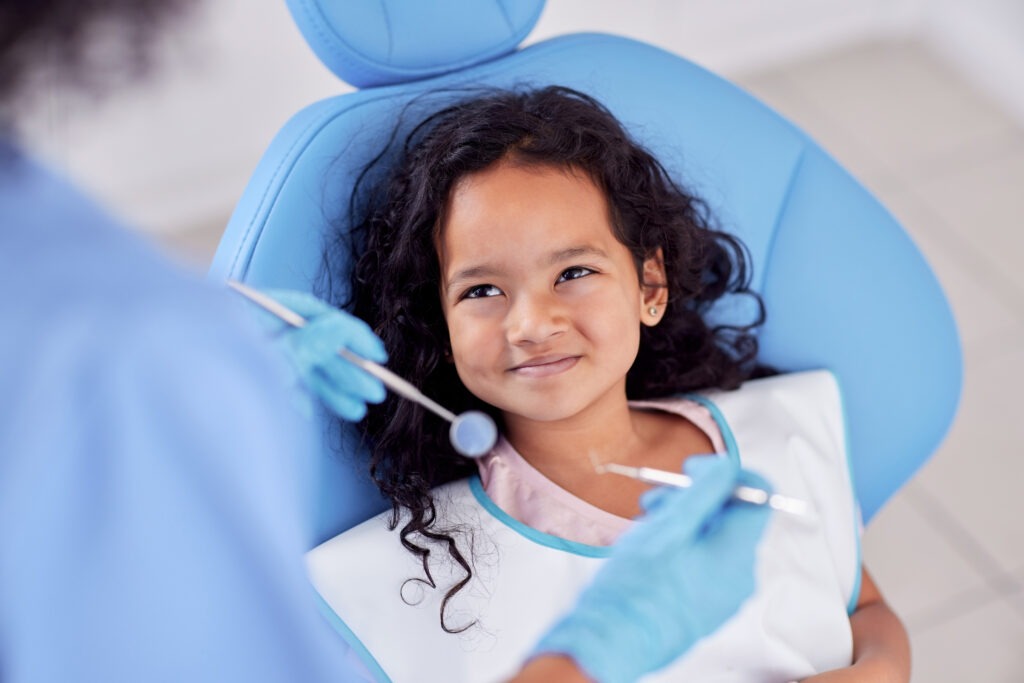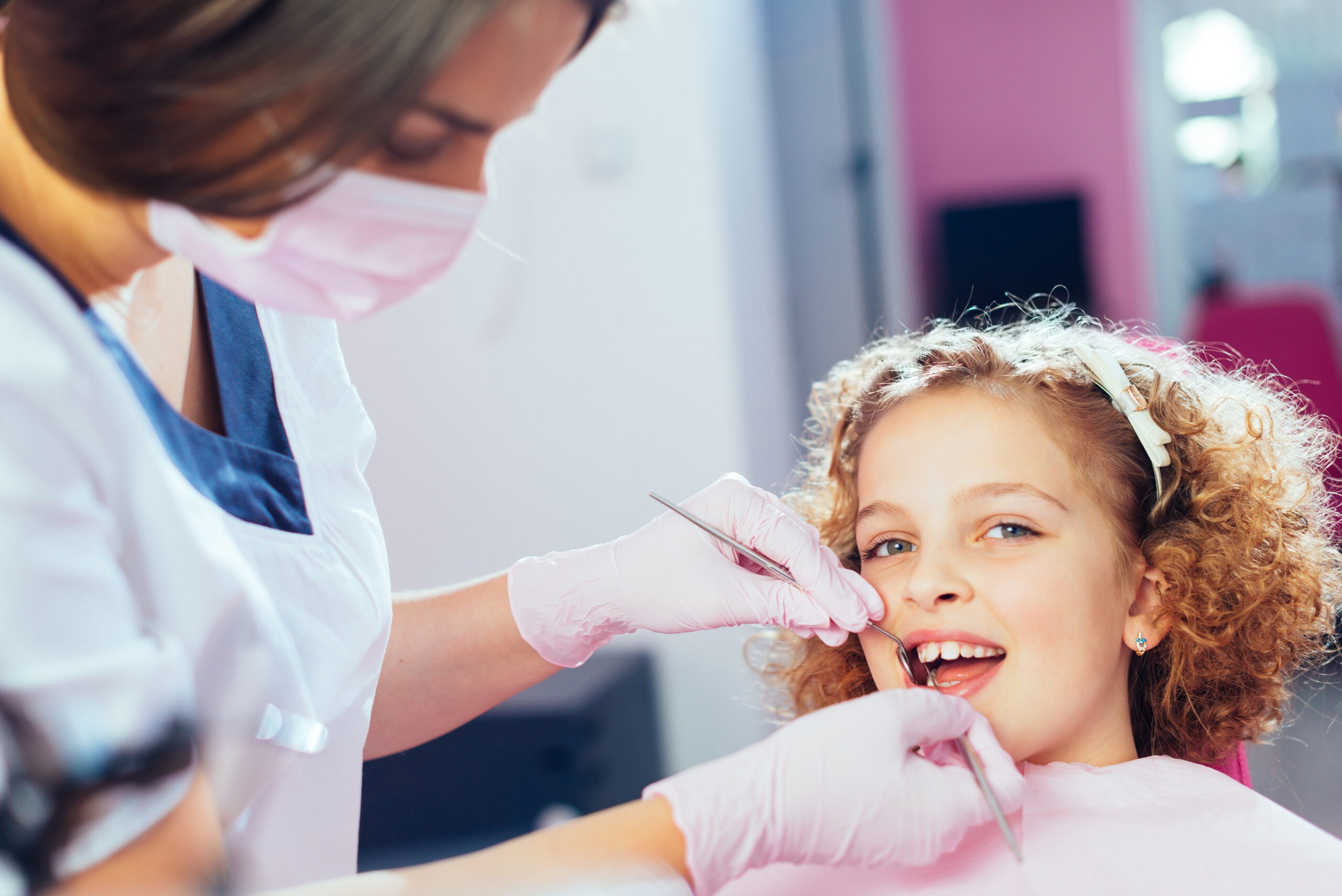When people think of orthodontic care, they often think of teens with clunky metal braces or adults with clear braces or Invisalign aligners. But, despite common misconceptions, kids can be excellent candidates for orthodontic treatment, too! In fact, in many cases, starting treatment at a younger age actually makes the most sense. Younger patients who need alignment care often benefit from something called two-phase orthodontic treatment. At Weideman Pediatric Dentistry & Orthodontics, we work with many young patients who benefit from an approach called two-phase orthodontic treatment. If you’re wondering, “What is two-phase orthodontic treatment?” and whether it is right for your child, we have the answers you’re looking for in this blog!
When Should A Child See An Orthodontist?
Did you know that the American Association of Orthodontics (AAO) recommends that children see an orthodontist by age seven? It’s true!
Timing is everything when it comes to orthodontic care. Seven might seem young, but it’s the best time to do some investigative work and detect any jaw development or tooth impaction concerns. By this stage, most kids have a combination of baby teeth and permanent teeth, which gives orthodontists a clearer picture of how everything is developing. These early evaluations can be a helpful window to spot potential concerns, making a world of difference in guiding healthy growth and setting the stage for a confident, functional smile.
What Is Two-Phase Treatment?
Two-phase orthodontic treatment is a specialized process that takes advantage of a child’s natural growth to correct significant orthodontic issues. It involves two separate stages of care, with a resting period in between.
Phase One Orthodontic Treatment
This phase, also known as early intervention, typically starts between ages seven and ten, while your child still has some baby teeth. The goal is to guide jaw growth, correct bite problems, and create space for incoming permanent teeth. Treatment during phase one might include metal braces on a few teeth, headgear, or palatal expanders to guide upper and lower jaw growth, space maintainers to space incoming teeth, or even Invisalign First aligners, which are specially designed for younger patients.
Once Phase One is complete, your child enters a resting phase. During this time, we monitor their growth and development through regular check-ins.
Phase Two Of Treatment
Phase two usually begins when most or all permanent teeth have erupted, typically during the early teen years. This phase focuses on fine-tuning the bite and alignment using full braces or clear aligners. The goal is to ensure a healthy, functional, and beautiful smile that lasts. Thanks to phase one, this half of the treatment is much simpler and quicker than if phase one had been skipped.
Who Needs Two-Phase Treatment?
Two-phase treatment is reserved for specific cases where early intervention can prevent more serious issues later. For example, it may be recommended for children with:
- Severe crowding
- Crossbites
- Impacted teeth or teeth that are unable to erupt properly
- Underbites and overbites
- Protruding front teeth at risk of injury
- Narrow dental arches
Though early evaluations are encouraged by the AAO, most children do not need two-phase orthodontic treatment. However, that does not mean you should assume your child is one of the ones who doesn’t! Oftentimes, the need for treatment can only be caught by the trained eye of an orthodontist. That’s why we don’t require dental referrals for new patients of any age.
For children who don’t need to start treatment right away, we simply monitor their development after the initial consultation. This allows us to ensure that their treatment needs haven’t changed with age, and, if they have, we can intervene at the right time for optimal results.
At Weideman Pediatric Dentistry & Orthodontics in Citrus Heights, we take a conservative approach. We only recommend two-phase treatment if it offers clear benefits for your child’s long-term oral health.
What Are The Benefits Of Two-Phase Treatment?
For children who need it, two-phase treatment offers a lot of advantages and benefits. Addressing key issues early can lead to smoother, less invasive treatment down the road. Some of the top benefits include:
- Guiding jaw growth to promote healthy development
- Creating space for permanent teeth to come in naturally, reducing the chances of crowding
- Preventing the need for tooth extractions or jaw surgery later in life
- Potentially shortening the length of future orthodontic treatment during the teenage years
- Improving overall bite and facial balance, enhancing both function and appearance
- Boosting your child’s confidence
- Helping to improve oral hygiene and oral health
Does My Child Have To Have Two-Phase Treatment?
If we recommend two-phase treatment, it’s because we believe it offers real benefits for your child’s future smile and oral health. While it may seem like a big commitment at a young age, this approach can often be a huge time, money, and stress saver in the long run.
We want both you and your child to feel confident and fully informed before starting any treatment. Our Citrus Heights orthodontists will carefully explain every option, including why we may recommend this approach, both to you and your child (in age-appropriate terms). Our team always focuses on collaboration and education, not pressure. We’re always available to answer questions or offer reassurance along the way.

Is Two-Phase Orthodontic Treatment Right For Your Child?
If your child is around age seven, now is a great time to schedule an orthodontic evaluation. These evaluations are a simple way to check in on their smile and learn what their growing teeth might need down the road.
No pressure, no stress. Just helpful guidance and a team that truly cares about your child’s smile. Contact Weideman Pediatric Dentistry & Orthodontics in Citrus Heights today to set up your child’s free orthodontic consultation and start the conversation about their alignment!
